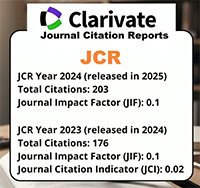Expiratory flow in wind musicians, application to the consideration of distances against COVID-19.
Expiratory flow in wind musicians, application to the consideration of distances against COVID-19.
Abstract
Musicians who play wind instruments need effective lung function and adequate expiratory muscle strength to generate sound due to the vibration of the air column in their interior. The measurement of volumes and capaci-ties constitutes an important step in pulmonary function tests. The objective of this study was to evaluate the expiratory flows in wind musicians, and to assess whether, with these data, conclusions can be drawn about the safety distance that health authorities are currently recommending for protection against COVID-19. The study was carried out in 27 musicians from the Soria’s (Spain) municipal band, and 19 controls, aged between 19 and 29 years. The forced vital capac-ity (FVC), forced expiratory volume in one second (FEV1), maximum expiratory flow (PEF) and the Tiffeneau index (FEV1/CVF) were analyzed. We observed that the CVF, FEV1 and PEF were lower in the group of musicians. The Tiffeneau index (the FEV1 / CVF ratio) in both groups remained within the physiological ranges of normality, without significant differences. We think that in the case of musicians, the safety distance currently established to prevent the spread of COVID-19 should be reconsidered, since expiratory flows are lower. In addition, the volume of air that remains in the instrument tubes and that constitutes the “dead space” must be considered. That is, in the musician, in addition to exerting less pressure for the respiratory flow, this is much more controlled
Downloads
References
Kampf G, Todt D, Pfaender S, Steinmann E. Persistence of coronaviruses on inanimate surfaces and their inactivation with biocidal agents. J Hosp Infect 2020;104:246–251. https:// doi: 10.1016/j.jhin.2020.01.022
Organización Mundial de la Salud. Vías de transmisión del virus de la COVID-19: repercusiones para las recomendaciones relativas a las precauciones en materia de prevención y control de las infecciones. Ginebra: Organización Mundial de la Salud, 2020. https://www.who.int/es/news-room/ commentaries/detail/modes-of-transmis- sion-of-virus-causing-covid-19-implications- for-ipc-precaution-recommendations.
Bourouiba L, Dehandschoewercker E, Bush JWM. Violent expiratory events: on coughing and sneezing. J Fluid Mech 2014; 745:537–563.
Bourouiba L. Turbulent gas clouds and respiratory pathogen emissions potential implications for reducing transmission of COVID-19. JAMA, 2020; March26. https:// doi: 10.1001/jama.2020.4756.
Yu ITS, Li Y, Wong TW, Tam W, Chan AT, Lee JH, Leung DY, Ho T. Evidence of airborne transmission of the severe acute respiratory syndrome virus. N Engl J Med 2004; 350: 1731–1739. https://doi: 10.1056/NE- JMoa032867.
Bahl P, Doolan C, de Silva C, Chughtai AA, Bourouiba L, MacIntyre CR. Airborne or droplet precautions for health workers treating COVID-19? J Infect Dis 2020; 16; jiaa189. https://doi: 10.1093/infdis/ jiaa189
Cui Y, Zhang ZF, Zhao F, Wang H, Shun- Zhang Y, Detels R. Air pollution and case fatality of SARS in the People’s Republic of China: an ecologic study. Environ Health 2003; 2(1) :15. https://doi: 10.1186/1476-069X-2-15.
Loudon RG, Roberts RM. Droplet expulsion from the respiratory tract. Am Rev Respir Dis 1967; 95:435-442. doi: 10.1164/ arrd.1967.95.3.435.
Mittal R, Ni R, Seo J. The flow physics of COVID-19. J Fluid Mech 2020:894, F2, doi:10.1017/jfm.2020.330.
Morawska L, Cao J. Airborne transmission of SARS-CoV-2: the world should face the reality. Environ Int 2020; 10:105730. https://doi: 10.1016/j.envint.2020.105730
Puente L, Marín JM, Burgos F, Cobos N, Casanova C, Cueto A. SEPAR 2011: Procedimientos de evaluación de la función pulmonar. Ed. Manual SEPAR. Madrid: Luzan; 2011.
Sant’Anna CA, Montenegro MR, Calanzo de Aquino C,i Klouczek MV. Análise da função pulmonar em músicos que tocam instrumento de sopro. O Mundo da Saúde Sao Paulo 2010; 34:200-209. http://www.saocamilo-sp.br/pdf/mundo_ saude/75/200a209.pdf
Fuhrmann AG, Franklin PJ, Hall GL. Prolonged use of wind or brass instruments does not alter lung function in musicians. Respir Med 2011; 105:761–767. https:// doi: 10.1016/j.rmed.2011.01.017
Brzęk A, Famuła A, Kowalczyk A, Plinta R. Efficiency of lung ventilation for people performing wind instruments. Med Pr 2016; 67:427–433. https:// doi: 10.13075/ mp.5893.00398.
Córdova A, Latasa I. Respiratory flows as a method for safely preventing the coronavirus transmission (Covid-19). Apunts Sports Med 2020; 55:81-85. https://doi. org/10.1016/j.apunsm.2020.05.001.
Official Statement of the European Respiratory Society. Standardized Lung Function Testing. Update 1993. Eur Respir J 1993; 6 (Suppl):1-100.
Rohwer D. Adult musicians’ perceived and measured pulmonary function. Med Probl Perform Art 2009; 24:10-14.
Hajda T. [School for clarinet]. [Kraków: Polskie Wydawnictwo Muzyczne; Polish]. 2013.
Borgia JF, Horvath SM, Dunn FR, von Phul PV, Nizet PM. Some physiological observations on French horn musicians. J Occup Med 1975;17: 696-701.
Navratil M, Rejsek K. Lung function in wind instrument players and glassblowers. Ann NY Acad Sci 1968; 155:276-282. https://doi. org/10.1111/j.17496632.1968.tb56772.x
Zuskin E, Mustajbegowic J, Schachter EN, Kern J, Vitale K, Pucarin Cvetkovic J, Chiarelli A, Milosevic M, Jelinic JD. Respiratory function in wind instrument players. Med Lav 2009; 100:133–141.
Harris LR. Horn playing and blood pressure. Lancet 1996; 348:1042. https://doi: 10.1016/S0140-6736(05)64982-3
Aguilar J, Carreras A, Teixido A, Haro M, Rodenstein DO, Morera J. Maximum respiratory pressures in trumpet players. Chest 1993; 104:1203-1204. https://doi: 10.1378/chest.104.4.1203.
Cossette I, Sliwinski P, Macklem PT. Respiratory parameters during professional flute playing. Respir Physiol 2000; 121:33-44. https://doi:10.1016/s0034-5687(00)00111-0.
Fuhrmann AG, Franklin PJ, Hall GL. Prolonged use of wind or brass instruments does not alter lung function in musicians. Respir Med 2011; 105:761-767. https://doi: 10.1016/j.rmed.2011.01.017.
Large J. Observation on the vital capacity of singers. JASA 1972; 52, 147. https://doi. org/10.1121/1.1981925.
OIT (Organización Internacional del Trabajo). Las normas de la OIT y la COVID-19 (coronavirus) https://www.ilo.org/wcm- sp5/groups/public/---ed_norm/---normes/ documents/publication/wcms_739939.pdf
Stauffer DW. Physical performance, selection and training of wind instrument players. Ann NY Acad Sci. 1968; 155:284-289. https:// doi: 10.1111/j.1749-6632.1968.tb5 6773.x
Li Y, Leung GM, Tang JW, Yang X, Chao CY, Lin JZ, Lu JW, Nielsen PV, Niu J, Qian H, Sleigh AC, Su HJ, Sundell J, Wong TW, Yuen PL. Role of ventilation in airborne transmission of infectious agents in the built environment. A multidisciplinary systematic review. Indoor Air 2007; 17: 2-18.
Mott RL. Mecánica de fluidos. México. Pearson Educación, 2006.
33. 33. Arregui FJ, Cabrera E, Cobacho R, Gómez E, Soriano J. Apuntes de mecánica de fluidos. Valencia. Universidad Politécnica, 2017.





















